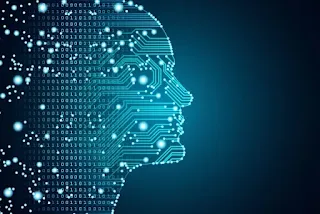Artificial intelligence (AI) is the intelligence of machines or software as opposed to human intelligence. It is the field of study in computer science that develops and studies intelligent machines. "AI" may also refer to the machines themselves.
Machine learning is the study of programs that can improve their performance on a given task automatically. It has been a part of AI from the beginning.
HOW DOES AI OBTAINS KNOWLEDGE
Before getting to know how AI obtains knowledge, It is important to be aware of what a Knowledge base is;
A knowledge base is a body of knowledge represented in a form that can be used by a program.
AI applications obtains knowledge through "Scraping" which is a modernized method of Knowledge acquisition whereby knowledge is collected from the volunteers and professionals who published the information (with or without agreement to provide their work to AI companies). This "Crowd sourced" technique used by AI companies does not guarantee the knowledge is correct or reliable since it may generate misinformation. Hence, Providing accurate knowledge for these modern AI applications is an unsolved problem for the AI Industry.
●Natural language processing (NLP) allows programs to read, write and communicate in human languages such as English. It helps to solve Specific problems like speech recognition, information extraction or question answering.
AI Tools
An AI tool is a software application that uses artificial intelligence algorithms to perform specific tasks and solve problems. AI tools can be used in a variety of industries from healthcare, finance to marketing and education.
Examples are
1. OpenAI
2. TensorFlow
3. PictoryAI
4. PyTorch
5. OpenNN
6. ChatGPT
7. Bard
8. Jasper
9. Grammarly
10. Runway
11. Copy.ai
PROBLEMS IN AI Applications
1. Algorithmic bias and fairness
Machine learning applications will be biased if they learn from biased data and most developers may not be aware that the bias exists. Bias is introduced by the way a model is deployed and how the trained data is selected.
●Fairness in machine learning is the study of how to prevent the harm caused by algorithmic bias.
If a Machine learning is used inappropriately, the (biased) algorithm can cause discrimination and make decision that can seriously harm people.
That's not all, Since Machine learning models are designed to make "predictions" that are only valid if we assume that the future will resemble the past which is definitely not true. For Instance, If they are trained on data that includes the result of racist decisions in the past, machine learning models will predict that racist decisions will be made in the future. Unfortunately, most AI applications use these predictions as recommendations which is racist. Thus, Machine learning is not well suited to help make decisions in areas when there is hope that the future will be better than the past.
An AI program can also make biased decisions even if the data does not mention "race" or "gender", instead it will make the same decision that correlate with other features(like address, shopping history or first name).
2. Lack of transparency
Most modern AI applications can not explain how they have reached a decision. And Without an explanation, problems may not not be discovered until after they have caused harm.
3. Technological Unemployment
From the early days of the development of artificial intelligence there have been arguments about whether tasks that can be done by Computers or Humans. However, Technology has increased rather than reduce unemployment since most white collar jobs have been eliminated by Artificial Intelligence.
4. Copyright Issues
Most generative AI data is often trained on unlicensed copyrighted works which includes domains of images or computer code wherein the output is then used under a rationale of "fair use".
5. Regulation
The regulatory and policy landscape for AI is an emerging issue in jurisdictions globally since it is very important to regulate AI applications.
AI Glossary
•Algorithm: An unambiguous specification of how to solve a class of problems that can perform calculation, data processing and automated reasoning tasks.
•Chatbot: A computer program or an artificial intelligence which conducts a conversation via auditory or textual methods.
•Python: An interpreted, high-level, general-purpose programming language created by Guido van Rossum.
Source: Wikipedia, My Opinion and Search Engine(Google)


Comments
Post a Comment
We will love to hear from you...
Share your thoughts with us!